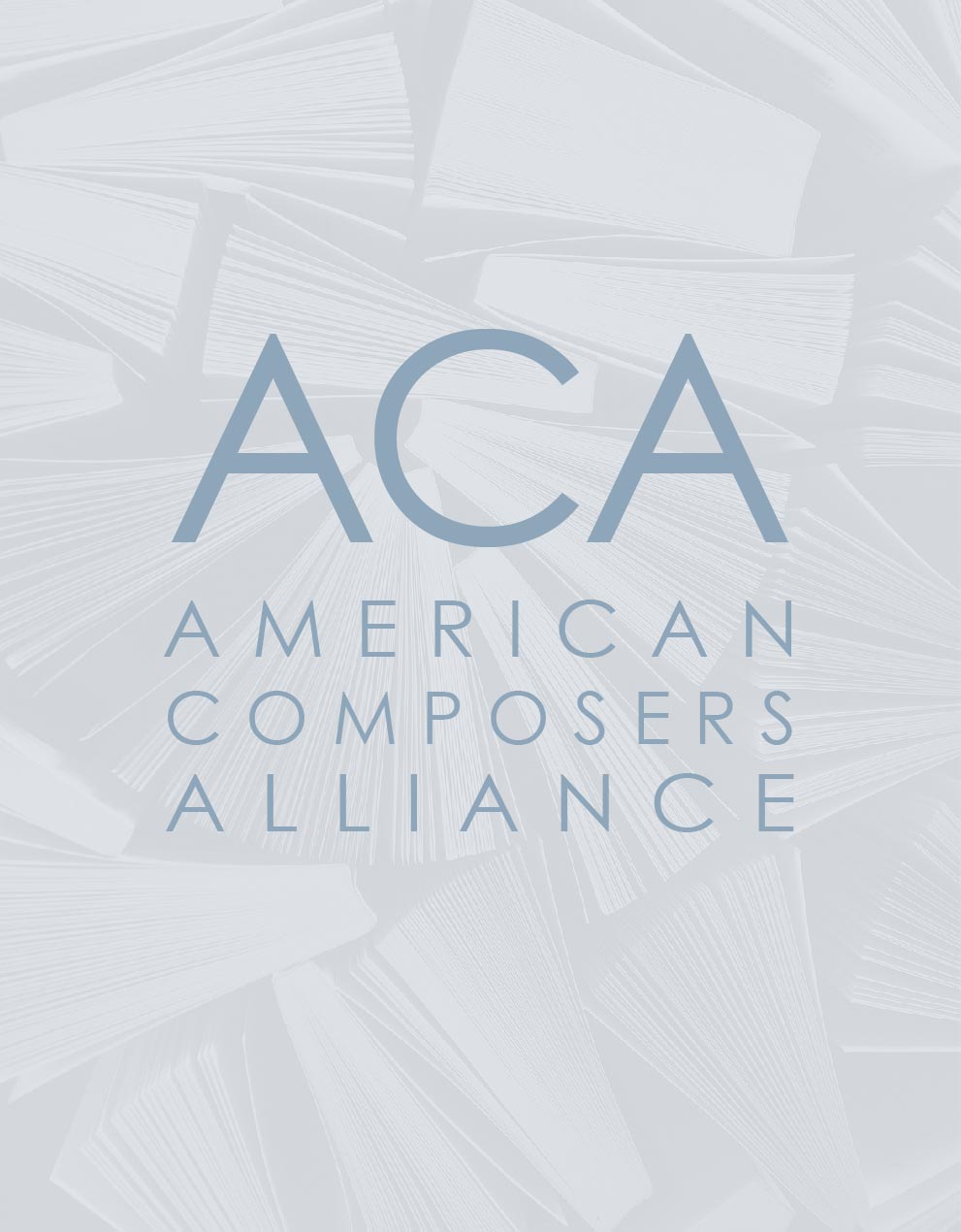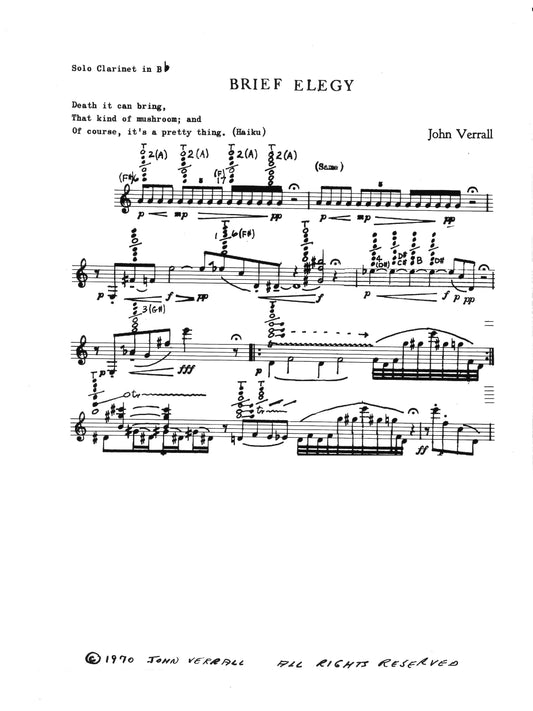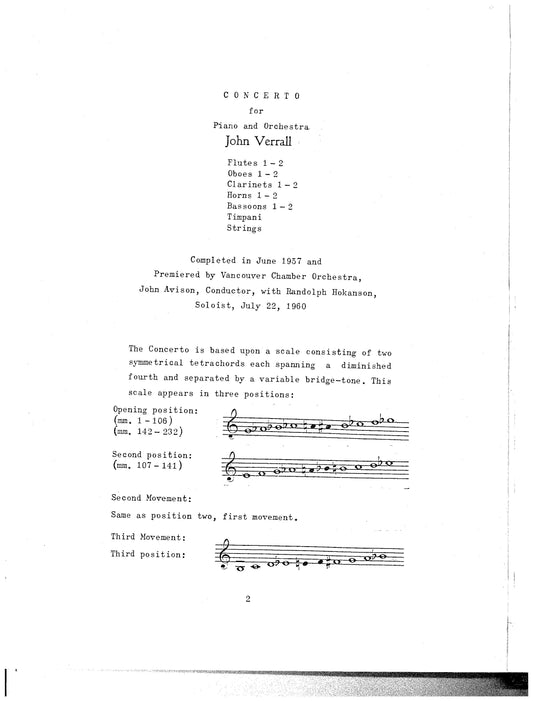Collection: Verrall, John

John Weedon Verrall (b. 1908 - d. 2001) was an American composer of contemporary classical music.
Prior to his University studies, Verrall studied composition with Donald Ferguson, followed by studies with R. O. Morris in London and Zoltán Kodály in Budapest. He obtained a B.M. degree from the Minneapolis School of Music in 1929, and a B.A. from the University of Minnesota in 1934. In the early 1930s he spent several summers at the Berkshire Music Center at Tanglewood, where he studied composition with Aaron Copland, Roy Harris, and Frederick Jacobi. He taught at Hamline University from 1934–1942 and Mount Holyoke College from 1942–1946, during which time he briefly served in the U.S. Army during World War II. While teaching at Mount Holyoke College, Verall also worked as a music editor for G. Schirmer. In 1946 he was awarded a Guggenheim Fellowship.[1] In 1948 he joined the music faculty at the University of Washington, where he taught composition and music theory until he retired as professor emeritus in 1973. Several of Verrall's students have gone on to have successful careers, including William Bolcom, Alan Stout, and Gloria Wilson Swisher.
From the late 1940s, Verrall used as the tonal basis for his music a nine-pitch scale consisting of two tetrachords on either side of a central pitch, itself alterable (C–D–E–E, F or F, G–A–B–B). This collection lends itself to symmetrical harmonic formations and melodic contours which, with equivalent rhythmic and metrical formations, generate the global and local pitch and rhythmic relations in his music.
Verrall wrote numerous symphonic works and chamber music pieces including four symphonies, seven string quartets, a violin concerto, and a viola concerto, among many other works. He also wrote several vocal art songs, choral works, and three operas.
Composer's photo above: John Verrall at the piano, undated. Photo: James A. Young. Special
Collections, UW Libraries, UW23557z
-
-
-
John Verrall
Chief Joseph Legend
solo Baritone, choir, orch: 3-3-3-3, 4-4-4-1, timp, perc, str
$82.50 - $146.50 -
-
-
-
-
-
-
-
John Verrall
Cowherd & the Skymaiden, The
opera for sop,alt,ten, bar,bbar,chorus,orch:1-1-1-1,1-2-0-0,perc,pf,str
Archival
-
-
-
-
-
-
-
-
-
-
-
John Verrall
Lyric Symphony
Flute (3), oboe (2), english horn, clarinet (2), bass clarinet, bassoon (3), horn (4), trumpet (3), trombone (3), tuba, timpani, percussion, strings
$65.00 -
-









